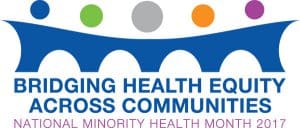By Laila A. Bell
 Greek mythology includes the fable of Gordius and his infamous knot. After ascending to the throne of Phrygia, Gordius dedicated his ox-cart to Zeus by tethering it to a post using an intricate knot. An oracle declared that the man who successfully unraveled the complex knot would become the next king of Asia. Countless prospects tried but failed to unravel the entwined mass, which was comprised of several tightly entangled knots that were seemingly impossible to loosen.
Greek mythology includes the fable of Gordius and his infamous knot. After ascending to the throne of Phrygia, Gordius dedicated his ox-cart to Zeus by tethering it to a post using an intricate knot. An oracle declared that the man who successfully unraveled the complex knot would become the next king of Asia. Countless prospects tried but failed to unravel the entwined mass, which was comprised of several tightly entangled knots that were seemingly impossible to loosen.
Those of us working to promote healthy births and reduce infant mortality are confronted with our own Gordian knot–persistent disparities in birth outcomes. Despite long-term improvements in access, clinical care and evidence-based interventions, disparities by income, geography, race, and ethnicity continue to limit health outcomes for mothers and their babies. The causes of these disparities are deeply rooted in social and economic inequities in the places where people live, grow, and work, as well as in public policies, programs, and agency practices that shape individual and population-level opportunities for good health.
Health inequities create dire consequences for the individuals who endure them and for society at large. The latest North Carolina Child Health Report Card finds disparities in prenatal care, birth outcomes, and postpartum support. As children grow, the health gaps they experience at birth age with them and impact their academic, social, and physical development. In turn, these individual health disparities become costly for our state as every North Carolinian shoulders the burden of reduced productivity, a less robust economy, more expensive medical care, or even the premature loss of life caused by avoidable health inequities.
Untangling the Gordian knot of health disparities requires intentional collaboration across sectors to address the root causes of inequities. Policymakers, agency administrators, and members of impacted communities can and should collaborate to address the highly interconnected social and economic factors that influence health outcomes while improving systems and public policies.
That’s why NC Child, the NC Division of Public Health Women’s Health Branch, NC Office of Minority Health and Health Disparities, and Rockingham County Division of Public Health Services have established a partnership to develop, test, and disseminate a tool to empower public health agencies and communities to evaluate and proactively address the health implications of state and local policies, practices, and programs. The North Carolina Health Equity Impact Assessment (HEIA) is based on a tool originally developed in Washington state, which uses data and community involvement to address health inequities and facilitate systems change.
Our initial progress is encouraging. The NC Division of Public Health has incorporated HEIAs into its Perinatal Health Strategic Plan, a statewide effort to reduce infant mortality by improving the conditions that form the foundation of health, called social determinants. The assessment has been adopted by Improving Community Outcomes for Maternal and Child Health, an initiative NC Division of Public Health Women and Children’s Health Section, which allocates $2.5M in recurring funds for three years to implement evidence-based interventions in maternal and child health to five lead health departments serving 13 rural and urban counties. Local health departments like the Rockingham County Division of Public Health describe the tool as an “opportunity to work better with communities and evaluate service delivery by identifying inequities and inefficiencies which may negatively impact residents.” The HEIA has also generated significant interest among community-based organizations and advocacy groups who are interested in reducing health disparities at the state or local level. In the coming year the collaboration will continue to work with local health departments and community-based organizations to use the tool to address health inequities.
The story of Gordius’ knot concludes when Alexander III determines to unravel it. After unsuccessfully wrestling with the knot for some time, Alexander stepped back, drew his sword, and sliced the knot in half with a single stroke. Alexander was praised for applying an out of the box solution and using bold and decisive action to tackle an intractable problem.
Complex problems like the Gordian knot demand deliberate attention, innovative approaches, and bold action to rise to the challenge. Every aspect of government and the economy has the potential to reduce, or worsen, health disparities. Policymakers, agency administrators, and community members all have a role to promote health equity. Like Alexander’s sword, we hope the HEIA can empower communities to cut through seemingly intractable problems and improve the health of all North Carolina children.
#impactEQUITYNC is a collaboration between NC Child, Rockingham County Division of Public Health, NC Division of Public Health Women’s Health Branch, and the NC Office of Minority Health and Health Disparities. For more information contact, Laila A. Bell, director of research and data at NC Child, at laila@ncchild.org.
